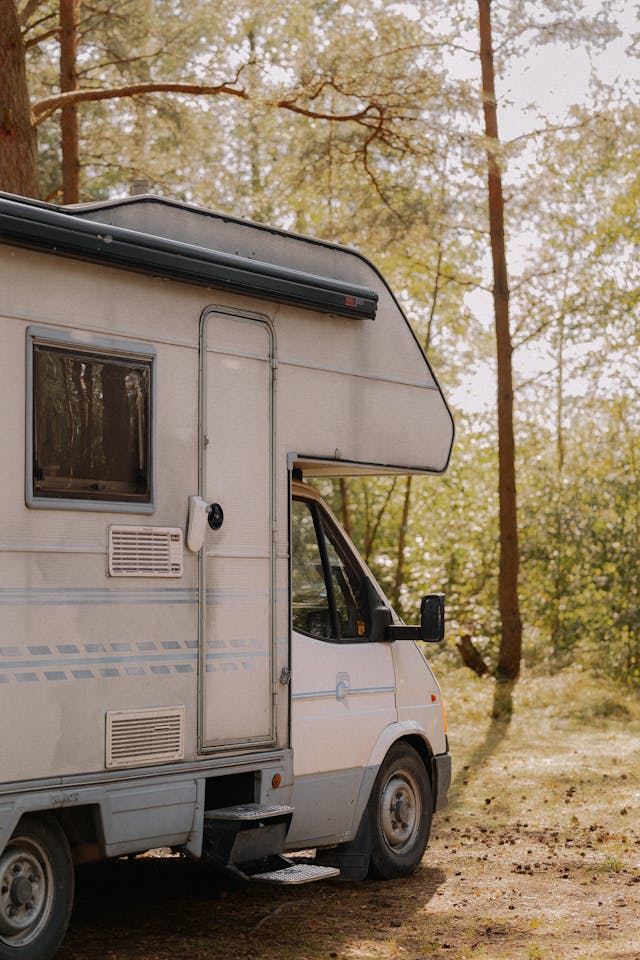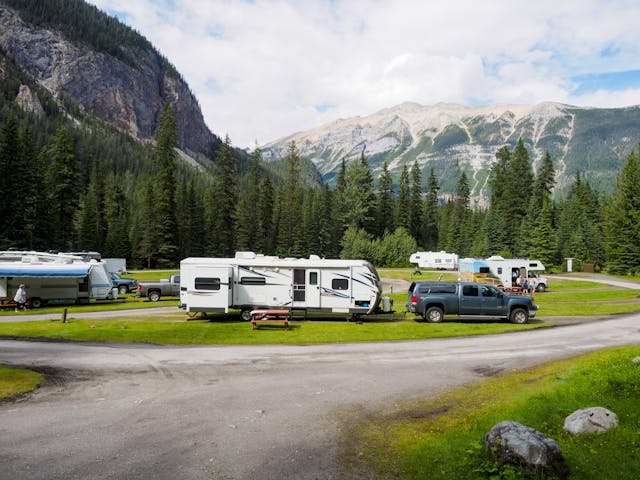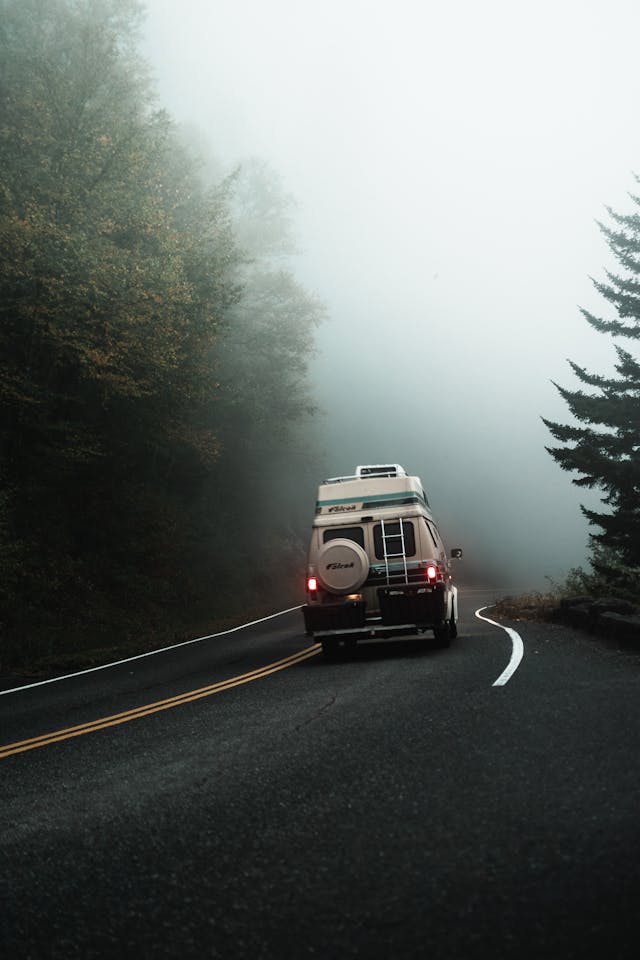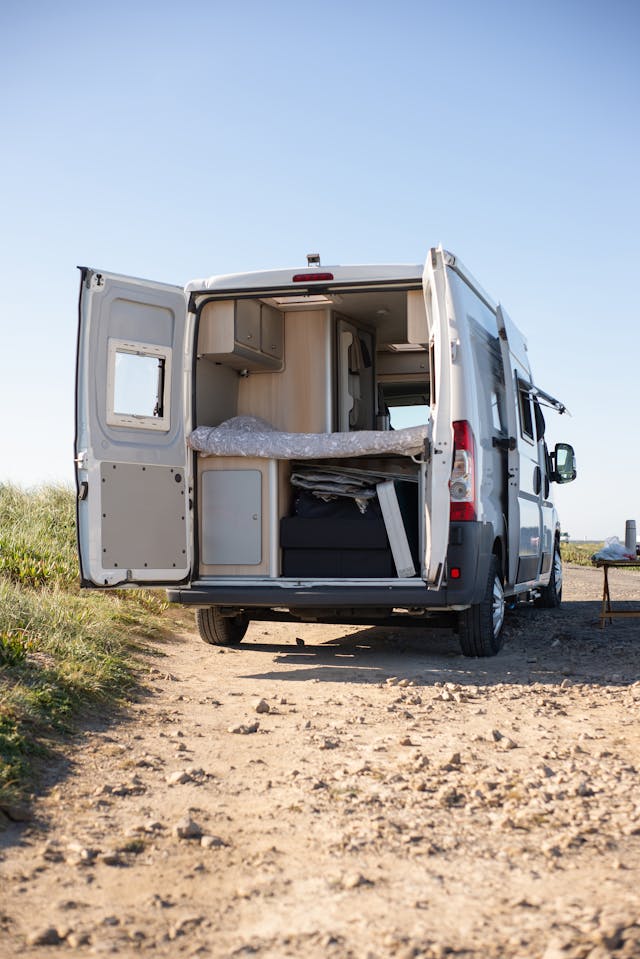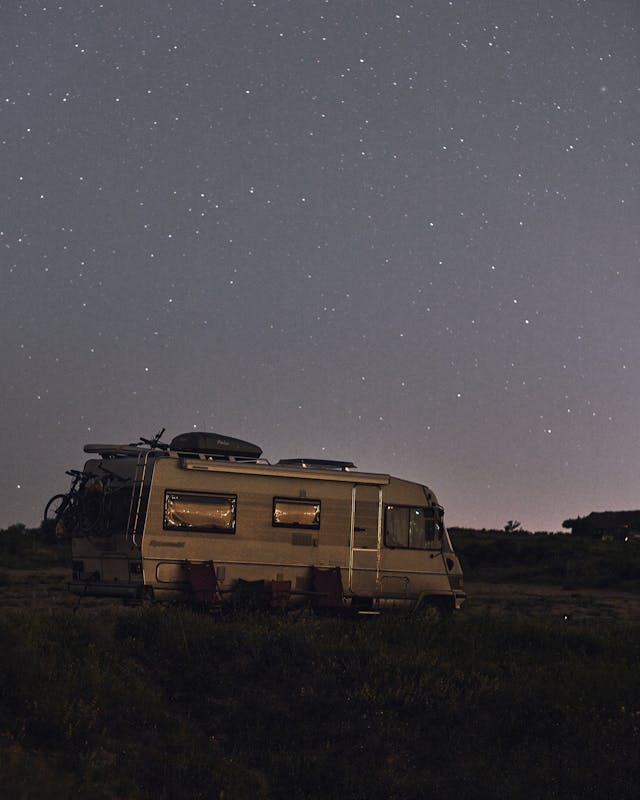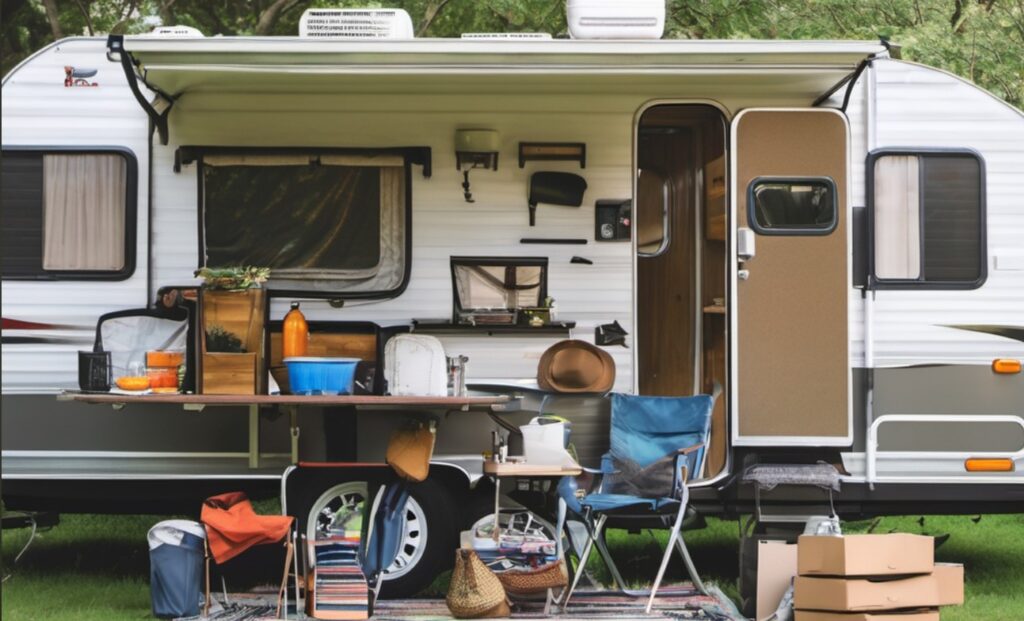It may be the middle of winter, but warm weather is always just around the corner. Whether you’re parked at a scenic campsite or cruising down the highway, a properly functioning air conditioner is essential for staying comfortable in your RV.
But what happens when you turn on your AC, and… nothing? Maybe it starts blowing warm air, runs inconsistently, or worse—won’t turn on at all.
Before you panic and head straight to a repair shop, there are a few simple troubleshooting steps you can try first. Many common AC issues can be resolved with basic maintenance, saving you time and money. That said, some problems may require professional help, and I’ll point those out along the way.
Let’s dive in and get your camper’s AC running again!
Problem: Overloading Your Generator
You didn’t mean to, but you may have accidentally overloaded your generator. Perhaps you ran the microwave while the AC was on, thinking it wouldn’t be an issue. Now your food is hot, but so is your RV—because your air conditioner has stopped working.
Overloading the generator can trip breakers or, in extreme cases, cause serious damage. But before you assume the worst, there are a few things you can check to determine if the problem is fixable.
Troubleshooting/Repair: Replace Your Generator and Monitor Power Usage
Unfortunately, once a generator is fried, there’s no fixing it—you’ll need to replace it. When shopping for a new one, opt for a model with at least 3,100 watts of power. While this isn’t enough to run high-energy appliances like a microwave and air conditioner simultaneously, it should be sufficient to keep your RV cool during hot summer days. To avoid future issues, be mindful of your wattage usage and avoid overloading your generator.
Problem: Generator Overload from Setting AC to Extreme Temperatures
It’s a common scenario—you want to test your RV’s thermostat, so you crank the AC down to a chilly 50 degrees Fahrenheit. While this might seem like a harmless way to check its performance, pushing the system too hard can have unintended consequences.
At first, the temperature drops as expected, but then—suddenly—the AC shuts off, and the familiar hum of the generator goes silent. The system has overloaded, leaving you without power and in need of a fix.
Troubleshooting & Solution: Avoid Extreme Thermostat Testing (and You May Need a New Generator)
Pushing your AC to its lowest setting—especially around 50 degrees—can overload and shut down your generator. If your generator has failed, you’ll likely need to replace it. When selecting a new one, opt for a model with sufficient wattage to handle your RV’s power demands.
To prevent this issue in the future, avoid setting your AC below 60 degrees, as most generators struggle to maintain power at such low temperatures. Instead, keep it between 60–70 degrees for optimal performance and longevity.
Troubleshooting & Solution: Avoid Extreme Thermostat Testing (and You May Need a New Generator)
Pushing your AC to its lowest setting—especially around 50 degrees—can overload and shut down your generator. If your generator has failed, you’ll likely need to replace it. When selecting a new one, opt for a model with sufficient wattage to handle your RV’s power demands.
To prevent this issue in the future, avoid setting your AC below 60 degrees, as most generators struggle to maintain power at such low temperatures. Instead, keep it between 60–70 degrees for optimal performance and longevity.
Neglecting AC Maintenance Can Lead to Costly Repairs
Your RV’s air conditioner isn’t a set-it-and-forget-it system—it requires regular maintenance to function efficiently. Over time, dust, dirt, and debris can clog essential components, reducing performance and potentially leading to costly repairs or even a full replacement.
To keep your AC unit in top shape, make cleaning a routine part of your RV maintenance. Aim to clean the system at least once every six months to prevent buildup that could strain the unit. Additionally, schedule a professional inspection annually to ensure everything is running smoothly and catch any issues before they become expensive problems.
Troubleshooting & Repair: Essential RV AC Maintenance Tips
Regular maintenance is key to keeping your RV’s air conditioning unit running efficiently and preventing costly breakdowns. Here are four essential steps to maintain your AC system and extend its lifespan:
- Use a Protective Cover – When your RV is not in use, cover the AC unit to prevent dust, dirt, and debris from accumulating. A simple, affordable cover can make a big difference in long-term performance.
- Lubricate the Fan Motor – Keeping the fan properly oiled ensures smooth operation. Check your RV manufacturer’s recommendations for the best lubricant, as lower-quality oils can cause wear and tear over time.
- Clean the Condenser Coils – The condenser is responsible for cooling the air, but it can become clogged with dirt, leaves, and dust. Make it a habit to inspect and clean the coils at least twice a year to prevent overheating and system failure.
- Ventilate the Roof Vent – Proper airflow helps regulate humidity and keeps dirt from accumulating inside the AC unit. Regularly clearing out the roof vent improves overall efficiency and prevents musty odors.
By incorporating these maintenance habits into your RV care routine, you’ll ensure your air conditioner stays in top shape, providing cool, refreshing air during your travels.
Problem: Neglecting AC Maintenance Leads to Reduced Performance
Over time, dust, dirt, and debris can accumulate inside your RV’s air conditioning unit, causing it to run inefficiently or even break down completely. If you can’t remember the last time you cleaned your AC, it’s time to take action. While some components require professional servicing, there are several maintenance tasks you can handle yourself to keep your AC running smoothly.
Troubleshooting & Repair: Deep Clean Your RV’s AC Unit
A dirty air conditioning unit can lead to reduced cooling efficiency or even complete failure. Regular cleaning ensures optimal performance and extends the lifespan of your AC.
Before You Begin:
If your AC unit can be unplugged, do so before cleaning. If it’s hardwired, turn it off completely and allow it to reach room temperature before starting.
Here are four key areas to focus on:
- Condenser Coils: Located on the roof of your RV, these coils can accumulate dirt, dust, and debris. Remove the AC cover by loosening the bolts, then use a specialized condenser coil cleaner and a handheld vacuum to clear away buildup.
- Evaporator Coils: Found beneath the AC filters, these coils play a crucial role in cooling efficiency. Clean them carefully using a handheld vacuum or a soft bristle brush.
- Filters: These should be cleaned or replaced at least once a month. Some filters are disposable, while others can be washed with mild soap and water. Be gentle—if you notice any rips, replace the filter immediately.
- Roof Vents: Keeping the roof vent clear of debris allows for better airflow and prevents moisture buildup, which can lead to mold or mildew.
Routine AC maintenance not only improves cooling but also helps prevent costly repairs down the line. Make it a habit to inspect and clean your system regularly!
Troubleshooting & Repair: Deep Clean Your RV’s AC Unit
A dirty air conditioning unit can lead to reduced cooling efficiency or even complete failure. Regular cleaning ensures optimal performance and extends the lifespan of your AC.
Before You Begin:
If your AC unit can be unplugged, do so before cleaning. If it’s hardwired, turn it off completely and allow it to reach room temperature before starting.
Here are four key areas to focus on:
- Condenser Coils: Located on the roof of your RV, these coils can accumulate dirt, dust, and debris. Remove the AC cover by loosening the bolts, then use a specialized condenser coil cleaner and a handheld vacuum to clear away buildup.
- Evaporator Coils: Found beneath the AC filters, these coils play a crucial role in cooling efficiency. Clean them carefully using a handheld vacuum or a soft bristle brush.
- Filters: These should be cleaned or replaced at least once a month. Some filters are disposable, while others can be washed with mild soap and water. Be gentle—if you notice any rips, replace the filter immediately.
- Roof Vents: Keeping the roof vent clear of debris allows for better airflow and prevents moisture buildup, which can lead to mold or mildew.
Routine AC maintenance not only improves cooling but also helps prevent costly repairs down the line. Make it a habit to inspect and clean your system regularly!
Problem: Your RV’s AC Unit Is Getting Louder Over Time
When you first purchased your RV, the air conditioner operated quietly, barely noticeable in the background. However, over time, the noise level has steadily increased. Now, the constant humming, rattling, or buzzing has become downright annoying. If your AC unit is louder than usual, it may be a sign that maintenance is needed or a part is wearing out. Let’s explore the possible causes and how to fix them.
Troubleshooting & Repair: Check the Rubber Shock Absorbers
If your RV’s air conditioner is making excessive noise—whether it’s a loud hum, whine, or chugging sound—the culprit may be misaligned rubber shock absorbers. These components are designed to reduce vibrations, but if they shift out of place and make contact with the fan or compressor coils, they can create unwanted noise.
To fix this:
- Remove the AC unit cover.
- Locate the rubber shock absorbers.
- Ensure they are properly positioned and not touching any moving parts.
A quick adjustment can restore quieter operation and prevent further wear on your air conditioning system.
Problem: Ice Buildup on Your RV Air Conditioner
Noticing ice forming around your RV’s air conditioner can be alarming. While you expect cool air, frozen coils or icy buildup is definitely not normal. So, what’s causing this unexpected freeze-up?
Troubleshooting & Repair: Refill or Repair Your Freon Levels
If you notice ice forming around your RV’s air conditioner, don’t panic—your AC isn’t magically creating ice. In fact, if your unit is freezing up, you may also notice that it’s not cooling your RV effectively.
This issue is often caused by low Freon levels. A Freon leak can lead to ice buildup and reduced cooling performance.
To fix this:
- Inspect your AC unit for any visible leaks. If you spot one, a professional repair may be necessary.
- If no leaks are found, your system may simply need a Freon recharge. Refilling the Freon should restore proper cooling and prevent future ice buildup.
Keeping your AC properly maintained and checking Freon levels regularly can help avoid this issue down the road.
Problem: Mysterious Leak from Your RV’s AC Unit—Is It Freon or Something Else?
Your RV’s air conditioner is dripping liquid, and no matter how many times you clean it up, the steady drip-drip-drip continues. The source of the leak isn’t immediately clear, but it keeps coming back.
Troubleshooting/Repair: Clean the Condenser Coils
The condenser coils in your air conditioner play a crucial role in minimizing water condensation. When dust and debris build up, they hinder proper evaporation, leading to persistent leaks. Regularly wiping down the coils helps prevent excess moisture from dripping. If you haven’t cleaned them yet, now is the time to do so.
Problem: Your AC Unit Is Now Leaking Water
The minor dripping issue is gone, but now larger pools of water are forming around your AC unit. Cleaning them up only provides a temporary fix, leaving concerns about potential electrical hazards. More importantly, identifying the source of the leak becomes a pressing concern.
Troubleshooting/Repair: Check and Replace the Gasket
A pool of water around your air conditioner doesn’t always indicate a leak—it could be condensation from internal or external components. In most cases, the culprit is the gasket located near the unit’s roof. Start by ensuring all bolts securing the gasket are tightened. Then, monitor the unit for further leaks. If water continues to accumulate, it’s time to replace the gasket with a new one.
Problem: The AC Unit Runs Hot and Overheats
Your air conditioner shouldn’t be emitting excessive heat, and if it feels unusually warm even without direct contact, there’s likely an issue. Frequent overheating may cause the unit to shut itself down unexpectedly, disrupting its cooling performance.
Problem: The AC Unit Runs Hot and Overheats
Your air conditioner shouldn’t be emitting excessive heat, and if it feels unusually warm even without direct contact, there’s likely an issue. Frequent overheating may cause the unit to shut itself down unexpectedly, disrupting its cooling performance.
Troubleshooting/Repair: Prioritize Regular Maintenance
Proper maintenance prevents most overheating issues. A common culprit is a dirty condenser coil, which, when clogged with dust and debris, forces the unit to work harder, generating excess heat and eventually shutting down. Keeping the coils clean ensures efficient operation and prevents overheating.
Problem: The AC Unit Is Blowing Warm Air Instead of Cooling
When temperatures soar, the last thing you need is an air conditioner pushing out warm air. If your RV feels like an oven despite the AC running, something is off. Before assuming the unit is beyond repair, consider troubleshooting the issue.
Troubleshooting/Repair: Check Motor Voltage Before Replacing the Unit
Before jumping to the conclusion that your AC unit needs to be replaced, start by testing the motor voltage. If the motor isn’t receiving power, a professional repair may be required. However, if voltage is present but the unit still isn’t functioning, it’s likely time to invest in a new air conditioner.
Problem: Your Air Conditioner is Emitting a Musty Odor
Despite your best efforts to keep your RV smelling fresh, an unpleasant, earthy odor lingers. You’ve cleaned out the fridge, scrubbed the kitchen and bathroom, and even done all the laundry—yet the smell persists. The culprit? Your air conditioning unit.
Troubleshooting/Repair: Clean the Radiator and Replace the AC Filters
Dirty filters and a clogged radiator are often the sources of unpleasant odors in your air conditioner. Start by wiping down the radiator to remove any built-up dust and debris. Then, check the filters—if they haven’t been changed recently, replace them. Old filters can trap and circulate musty smells, so swapping them out will help eliminate lingering odors.
Problem: The AC Runs Constantly and Won’t Shut Off
An air conditioner that never stops running isn’t just inefficient—it can also shorten its lifespan. Unless you’ve intentionally set it to run nonstop (which isn’t recommended), something is likely wrong. If left unchecked, this constant operation could lead to premature wear and the need for a replacement much sooner than expected.
Troubleshooting/Repair: Inspect the Thermostat and Circuit Board
A faulty thermostat could be the reason your AC won’t shut off, continuously signaling the unit to run. Another possible culprit is a malfunctioning circuit board, which can disrupt normal operation. Once you’ve identified the issue, it’s best to bring in a professional to handle the necessary repairs.
Conclusion
Your RV’s air conditioning unit plays a crucial role in keeping you comfortable, but it requires regular upkeep to perform at its best. Many common AC issues can be prevented with routine cleaning and maintenance. By sticking to a maintenance schedule—at least every six months, or more frequently if needed—you can extend the lifespan of your unit and avoid costly repairs down the road.


